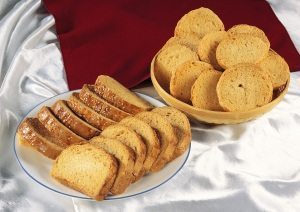
According to a FSSAI’s notification dated 11th December 2014, changes have been proposed to be made. These changes in the regulations will be called the Food Safety and Standards (Food Products Standards and Food Additives) Amendment Regulations, 2014. These regulations will come into force on their final publication in the Official Gazette. The last date for the comments & Suggestions from all stakeholders is April 5, 2015.
1) Algal and Fungal oil Allowed in the preparation of foods for infants
As per the Regulation No. 2.1 relating to Dairy Products and Analogues of Food Safety and Standards (Food Products Standards and Food Additives) Regulations, 2011, FSSAI has proposed the following to be inserted just after the first paragraph of Clause 2 and Clause 5 of Sub-Regulation No. 2.1.9 of the FSS (Food Products Standards and Food Additives) Regulations, 2011;
“It may contain algal and fungal oil as sources of Docosahexaenoic Acid (DHA) and Arachidonic Acid (ARA) from Crypthecodium cohnii and Moritella alpine respectively at the level of 17mg per 100kcal (equivalent to 0.3 per cent of total fatty acids of DHA) and ARA as ratio of ARA: DHA as 2:1.”
2) Isomaltulose to be used as an Artificial Sweetener
a) Isomaltulose has been added in the list of Artificial Sweeteners in Regulation No. 3.1 of FSS (Food Products Standards & Food Additives) Regulations, 2011. Isomaltulose is allowed to be used in the confectionery products and the maximum limit shall be 50 per cent (max) of total sugar without adversely affecting the stability of the product. Ice Lollies or Edible Ices have been excluded from the state confectionery products category.
b) Isomaltulose is also proposed to be included in the Table 2 of Appendix A relating to the list of food additives for use in foods. Isomaltulose is allowed to be used as an artificial sweetener for the following;
- Chewing Gum/Bubble Gum
- Sugar Based/Sugar Free Confectionary
- Chocolates
- Synthetic Syrup for dispensers
- Lozenges
The values of Isomaltulose should be 50 per cent (max) of total sugar without adversely affecting the stability of the above discussed food products.
C) Dietary Fibre (Dextrin-Soluble Fibre) is allowed to be used in various foods
Dietary Fibre (Dextrin) may be used in the following food products in the levels mentioned in column(3) of the table given below and shall bear the label declaration as per Food Safety and Standards (Packaging and Labelling) Regulations, 2011 and the source of the ingredients (wheat/ maize) should be Non-GMO
| Article of Food | Minimum level (source of dietary fibre) |
|---|---|
| Flakes and ready to eat breakfast cereals | 3g/100g or 1.5g/ 100kcal |
| Noodles and pasta | 3g/100g or 1.5g/ 100kcal |
| Salad dressing or topping and spreads | 3g/100g or 1.5g/ 100kcal |
| Table top fibre as filler or carrier of cereals | 3g/100g or 1.5g/ 100kcal |
| Other snack food or savouries | 3g/100g or 1.5g/ 100kcal |
| Bakery products including biscuits, cookies, breads, cake mixes and pastries | 3g/100g or 1.5g/ 100kcal |
Provided that if in the above mentioned products it is intended to make claims on high source of dietary fibre, such products shall contain not less than 3g/100g or 1.5g/100Kcal and not more than 6g/100g or 3g/100Kcal.”
Leave a Reply